Nissan Qashqai vs Ford Kuga – Differences & prices compared
Compare performance, boot space, consumption and price in one view.
Find out now: which car is the better choice for you – Nissan Qashqai or Ford Kuga?
The Nissan Qashqai (SUV) comes with a Petrol MHEV or Full Hybrid engine and Manuel or Automatic transmission. In comparison, the Ford Kuga (SUV) features a Petrol, Full Hybrid or Plugin Hybrid engine with Manuel or Automatic transmission.
When it comes to boot capacity, the Nissan Qashqai offers 504 L, while the Ford Kuga provides 412 L – depending on how much space you need. If you’re looking for more power, decide whether the 190 HP of the Nissan Qashqai or the 243 HP of the Ford Kuga suits your needs better.
In terms of consumption, the values are 5.10 L per 100 km for the Nissan Qashqai, and 0.90 L for the Ford Kuga.
Price-wise, the Nissan Qashqai starts at 29400 £, while the Ford Kuga is available from 34200 £. Compare all the details and find out which model fits your lifestyle best!
In the realm of compact SUVs, both the Ford Kuga and the Nissan Qashqai deliver competitive offerings, appealing to modern drivers with diverse needs. The Ford Kuga impresses with its robust engine lineup and spacious interior, making it a versatile choice for families who prioritize performance and comfort. Conversely, the Nissan Qashqai stands out with its sleek design and advanced safety features, offering excellent urban agility and efficiency, ideal for those navigating busy cityscapes.
Nissan Qashqai
The Nissan Qashqai stands out in the compact SUV market with its sleek design and versatile features. Its smooth ride and refined interior make it a popular choice for both city driving and weekend adventures. Advanced safety technologies and user-friendly infotainment add to its appeal, ensuring a comfortable and secure driving experience for all passengers.
details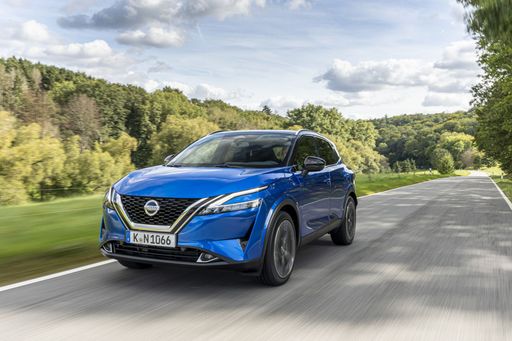 @ Nissan
@ Nissan
 @ Nissan
@ Nissan
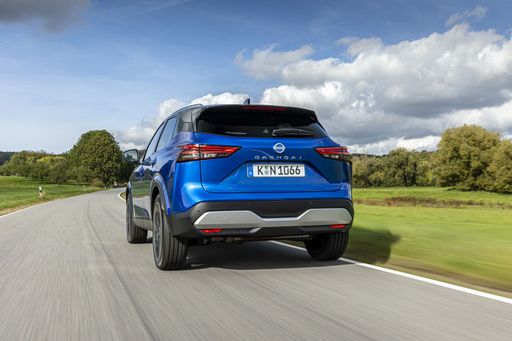 @ Nissan
@ Nissan
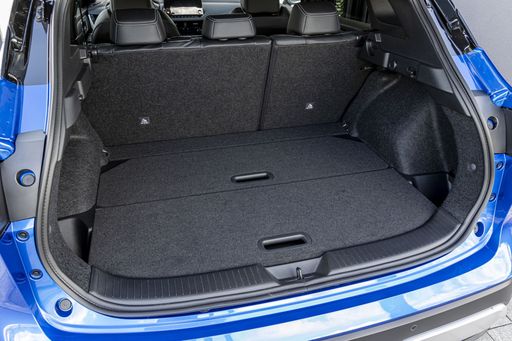 @ Nissan
@ Nissan
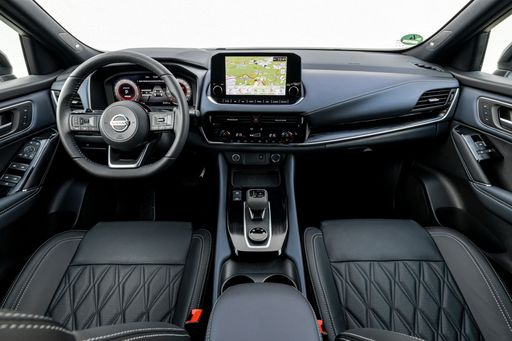 @ Nissan
@ Nissan
Ford Kuga
The Ford Kuga stands out in the realm of compact SUVs with its sleek design and dynamic performance capabilities. Its spacious interior is thoughtfully designed to provide comfort and practicality for both driver and passengers, making it an ideal choice for families and adventurers alike. Advanced technology and safety features further enhance the driving experience, ensuring a seamless blend of innovation and reliability on the road.
details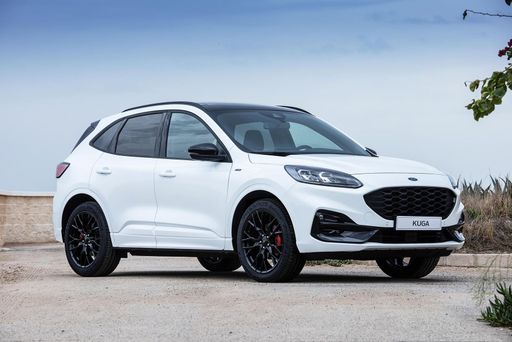 @ kuga.fordpresskits.com
@ kuga.fordpresskits.com
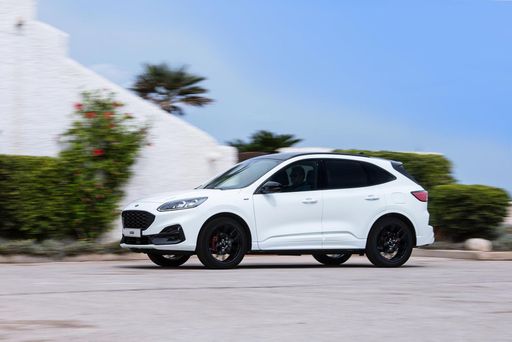 @ kuga.fordpresskits.com
@ kuga.fordpresskits.com
 @ kuga.fordpresskits.com
@ kuga.fordpresskits.com
Comparing the Ford Kuga and Nissan Qashqai: Which SUV Reigns Supreme?
In the ever-evolving landscape of compact SUVs, the Ford Kuga and the Nissan Qashqai stand out as two prominent contenders. Both vehicles have undergone significant updates in the 2024 model year, featuring advanced technologies, various powertrains, and sleek designs. Let's dive into the technical specifications and innovative features of these two SUVs to determine which one best matches your needs.
Powertrain and Performance
The Ford Kuga offers a diverse array of engine types, including petrol, full hybrid, and plug-in hybrid options. With power outputs ranging from 150 to 243 HP and a 0-100 km/h acceleration time as brisk as 7.3 seconds, the Kuga promises robust performance for its class. Notably, the plug-in hybrid variant delivers an impressive electric range of 69 km, courtesy of a 14.4 kWh battery.
On the other hand, the Nissan Qashqai provides petrol mild hybrid and full hybrid options. With power outputs ranging from 140 to 190 HP, the Qashqai achieves a decent acceleration, with the best 0-100 km/h timing at 7.9 seconds. Its peak torque of 330 Nm, however, lends the Qashqai a responsive and energetic driving experience, ideal for every urban setting.
Efficiency and Environment
In terms of efficiency, the Ford Kuga's plug-in hybrid version stands out with a consumption rate as low as 0.9 L/100km and a mere 20 g/km of CO2 emissions. This makes it an attractive choice for eco-conscious drivers. Other Kuga variants maintain competitive efficiency levels, with consumption ranging between 5.3 and 6.4 L/100km, depending on the powertrain.
The Nissan Qashqai exhibits commendable efficiency with a consumption rate between 5.1 and 6.8 L/100km, and CO2 emissions from 116 to 154 g/km. Despite this, the Qashqai's CO2 efficiency classes mainly stay in the 'E' and 'D' categories, slightly lagging behind the Kuga's best-in-class figures.
Interior and Cargo Space
Both vehicles offer ample space for five passengers, but when it comes to cargo, the Nissan Qashqai takes the lead with a trunk capacity of up to 504 liters, compared to the Ford Kuga's 412 liters. This makes the Qashqai particularly appealing for those who frequently need to transport larger items or luggage.
Dimensions and Design
Ford's Kuga exhibits a more substantial presence with its length extending up to 4,645 mm. It stands slightly taller with a height reaching up to 1,681 mm and offers wider spacing at 1,882 mm. In contrast, the Nissan Qashqai measures a little more compact with a length of 4,425 mm, a more modest height of 1,625 mm, and a width of 1,835 mm. These dimensions indicate that the Kuga might provide more comfort for larger passengers, while the Qashqai's more compact design enhances its maneuverability in tight spaces.
Final Thoughts
Choosing between the Ford Kuga and Nissan Qashqai hinges on your personal preferences and priorities. For those prioritizing environmental considerations and electric range, the Kuga's plug-in hybrid version is an excellent choice. However, if practicality, cargo space, and torque are at the top of your wishlist, then the Nissan Qashqai emerges as a strong contender.
The decision ultimately comes down to balancing your need for performance, efficiency, and utility. Both SUVs encapsulate what modern drivers seek, making either a worthy addition to the family driveway.

|

|
|
|
|
Costs and Consumption |
|
|---|---|
|
Price
29400 - 42500 £
|
Price
34200 - 45000 £
|
|
Consumption L/100km
5.1 - 6.8 L
|
Consumption L/100km
0.9 - 6.8 L
|
|
Consumption kWh/100km
-
|
Consumption kWh/100km
-
|
|
Electric Range
-
|
Electric Range
69 km
|
|
Battery Capacity
-
|
Battery Capacity
1.1 - 14.4 kWh
|
|
co2
116 - 154 g/km
|
co2
20 - 154 g/km
|
|
Fuel tank capacity
55 L
|
Fuel tank capacity
42 - 54 L
|
Dimensions and Body |
|
|---|---|
|
Body Type
SUV
|
Body Type
SUV
|
|
Seats
5
|
Seats
5
|
|
Doors
5
|
Doors
5
|
|
Curb weight
1420 - 1665 kg
|
Curb weight
1526 - 1859 kg
|
|
Trunk capacity
479 - 504 L
|
Trunk capacity
412 L
|
|
Length
4425 mm
|
Length
4604 - 4645 mm
|
|
Width
1835 mm
|
Width
1882 mm
|
|
Height
1625 mm
|
Height
1673 - 1681 mm
|
|
Payload
466 - 520 kg
|
Payload
541 - 550 kg
|
Engine and Performance |
|
|---|---|
|
Engine Type
Petrol MHEV, Full Hybrid
|
Engine Type
Petrol, Full Hybrid, Plugin Hybrid
|
|
Transmission
Manuel, Automatic
|
Transmission
Manuel, Automatic
|
|
Transmission Detail
Manual Gearbox
|
Transmission Detail
Manual Gearbox, Automatic Gearbox
|
|
Drive Type
Front-Wheel Drive, All-Wheel Drive
|
Drive Type
Front-Wheel Drive, All-Wheel Drive
|
|
Power HP
140 - 190 HP
|
Power HP
150 - 243 HP
|
|
Acceleration 0-100km/h
7.9 - 10.2 s
|
Acceleration 0-100km/h
7.3 - 9.9 s
|
|
Max Speed
170 - 206 km/h
|
Max Speed
195 - 200 km/h
|
|
Torque
240 - 330 Nm
|
Torque
240 Nm
|
|
Number of Cylinders
3 - 4
|
Number of Cylinders
3 - 4
|
|
Power kW
103 - 140 kW
|
Power kW
111 - 178 kW
|
|
Engine capacity
1332 - 1497 cm3
|
Engine capacity
1496 - 2488 cm3
|
General |
|
|---|---|
|
Model Year
2024
|
Model Year
2024
|
|
CO2 Efficiency Class
E, D
|
CO2 Efficiency Class
E, D, B
|
|
Brand
Nissan
|
Brand
Ford
|
Nissan Qashqai
Exploring the New Nissan Qashqai: A Masterclass in Innovation and Performance
The Nissan Qashqai stands as a testament to the brand's continuous evolution in the competitive SUV market. Building on its robust reputation, the latest models bring a blend of style, efficiency, and groundbreaking technology that cater to the modern driver's needs. As we delve into the technical nuances and innovative features, it becomes evident why the Qashqai remains a top contender in its segment.
Powertrain and Efficiency: A Harmonious Balance
The latest Nissan Qashqai models feature an advanced range of powertrain options, including both mild-hybrid and full-hybrid systems. The 1.3 DIG-T MHEV engines provide power outputs ranging from 140 to 158 PS, ensuring a responsive driving experience while maintaining a remarkable fuel efficiency of 6.3 L/100km for automatic front-wheel drive versions. The full-hybrid 1.5 VC-T e-POWER delivers an impressive 190 PS while achieving a fuel efficiency of just 5.1 L/100km, demonstrating Nissan's commitment to ecological innovation.
Advanced Transmission Systems
Drivers can choose between manual or automatic transmissions, tailored to their driving style. The manual gearbox offers a tactile driving experience, while the automatic options, including a CVT and reduction gear transmission, ensure seamless power delivery and heightened efficiency. For those who seek greater traction and stability, all-wheel drive configurations are also available, enhancing the Qashqai's versatility.
High-Tech Interior: Comfort Meets Connectivity
The Qashqai's interior is a sanctuary of technology and comfort. The SUV features a user-friendly infotainment system with a touchscreen interface, compatible with both Android Auto and Apple CarPlay. The seamless integration of technology extends to advanced driver-assistance systems (ADAS) that include ProPILOT with Navi-link, enhancing convenience and safety during long drives or urban manoeuvres.
Performance and Dynamics: The Driving Experience
When it comes to performance, the Qashqai does not compromise. With acceleration from 0-100 km/h in as little as 7.9 seconds in the more powerful hybrid editions, and a top speed ranging from 170 to 206 km/h, Nissan ensures that excitement is part and parcel of the Qashqai driving experience. This balance of power and control is complemented by a well-tuned suspension system and precise steering response, providing a confident drive whether on highways or country lanes.
Design and Practicality: Where Form Meets Function
Sporting an aerodynamic silhouette, the Qashqai exudes a modern vibe that is both eye-catching and functional. Its dimensions, with a length of 4425 mm and a width of 1835 mm, provide ample cabin space for five passengers, along with a versatile boot capacity of up to 504 litres. These aspects make it an ideal choice for families and adventurers alike.
Conclusion: A Forward-Thinking Choice
The Nissan Qashqai remains a steadfast choice for those seeking an SUV that blends innovative technology with everyday practicality. With its advanced hybrid options and cutting-edge features, it not only meets but often exceeds the demands of today's environmentally conscious and tech-savvy drivers. As Nissan continues to push boundaries, the Qashqai stands as a beacon of what modern SUVs can achieve.
Ford Kuga
Discovering the Ford Kuga: An SUV for the Modern Age
The Ford Kuga has established itself as a versatile and reliable choice in the competitive SUV market. Combining sleek design with innovative technology, the Kuga offers a range of options to suit different driving preferences and needs. Let’s delve into the various technical details and pioneering features that make this vehicle stand out.
Design and Construction
The Ford Kuga embodies a contemporary design ethos, with dimensions that accommodate both functionality and style. Measuring between 4604 and 4645 mm in length, the Kuga is designed to offer ample interior space while maintaining a compact exterior profile. This is complemented by a width of 1882 to 1883 mm and a height ranging from 1650 to 1681 mm, ensuring a comfortable and commanding drive on the road.
Innovative Powertrains
With a diverse array of engine configurations, the Kuga caters to both traditional and eco-conscious drivers. The range includes 1.5-litre EcoBoost petrol engines, 2.0-litre EcoBlue diesel options, as well as an innovative 2.5-litre full hybrid and plug-in hybrid variants. The hybrid models, particularly the plug-in hybrid, offer impressive efficiency with a consumption as low as 0.9 L/100 km and an electric range of up to 69 km.
Performance and Efficiency
The Kuga delivers a robust performance with power outputs ranging from 120 PS to 243 PS, ensuring there is a model to match your driving style. The vehicle accelerates from 0-100 km/h in as little as 7.3 seconds, depending on the chosen powertrain. Notably, the plug-in hybrid versions allow for considerable fuel savings, making the Kuga a cost-effective option for long-term use.
Advanced Technology and Features
Ford has integrated the latest technology into the Kuga, enhancing both comfort and safety. The vehicle features multiple driving modes tailored to different terrains, advanced driver-assistance systems, and a user-friendly infotainment system that keeps all controls within easy reach. The intelligent all-wheel-drive system available on certain models provides enhanced grip and stability in challenging conditions.
Interior Comfort and Practicality
Inside the Kuga, you'll find a spacious cabin with seating for five, designed with both comfort and utility in mind. The boot space ranges from 405 to 435 litres, allowing for an impressive amount of luggage capacity. High-quality materials and smart design choices throughout the cabin ensure a premium experience, further enhanced by options like Vignale trims for those seeking added luxury.
A Sustainable Choice
With its focus on efficiency and reduced emissions, the Ford Kuga aligns with the growing demand for environmentally responsible vehicles. The CO2 emissions range from 20 to 155 g/km, placing many models in favourable efficiency classes, thus contributing to a more sustainable future.
Conclusion
The Ford Kuga stands out in the SUV segment by offering a perfect blend of performance, technology, and sustainability. Its versatility makes it an ideal choice for diverse lifestyles, from urban adventures to rural explorations. With its innovative features and design, the Kuga is a testament to Ford’s commitment to delivering high-quality vehicles suited to today's discerning drivers.
Which drive types are available for the Nissan Qashqai?
Available as Front-Wheel Drive or All-Wheel Drive.
The prices and data displayed are estimates based on German list prices and may vary by country. This information is not legally binding.
